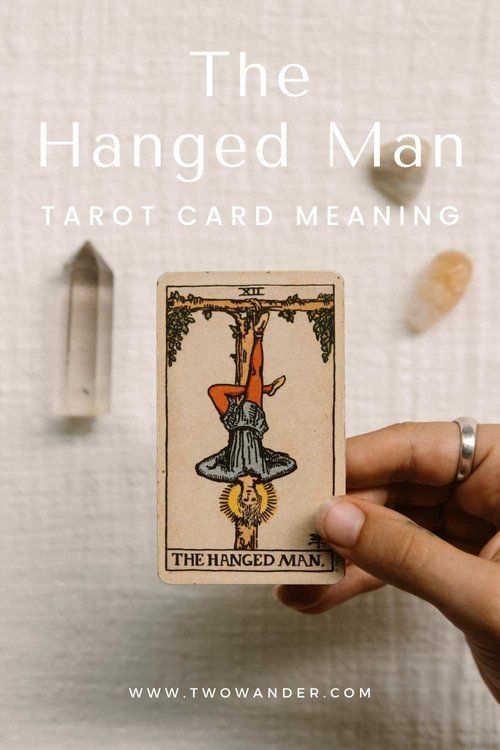The Hanged Man tarot card, characterized by its intriguing imagery of a man suspended upside down from one foot, often evokes curiosity and perplexity. At first glance, this card may appear ominous, or even suggestive of stagnation and suffering. However, its symbolism stretches far deeper, enveloping a rich tapestry of meanings that delve into themes of surrender, perspective, and transformation. As one contemplates the Hanged Man, they may find themselves drawn into an exploration of its significance within the broader narrative of the tarot.
To begin with, the Hanged Man embodies the essence of pause. In our contemporary existence, where haste and productivity reign supreme, the notion of suspension can seem counterintuitive. Yet, this card invites individuals to embrace stillness, advocating for the necessity of introspection. It represents those moments in life when we feel compelled to step back, bewildered by the rapid pace of events swirling around us. This card challenges the observer to contemplate the importance of reflection as a conduit for achieving clarity and understanding.
An integral aspect of the Hanged Man’s representation is the notion of surrender. In many traditions, surrender is misconstrued as weakness or defeat. However, the Hanged Man posits a different narrative; it suggests that letting go of control can lead to a profound reawakening. By relinquishing the desire to manipulate circumstances, one might discover tranquility and enlightenment. This act of surrender is not passive. Rather, it requires an active willingness to engage with discomfort and uncertainty, ultimately fostering growth and resilience.
Perspective is another cornerstone of the Hanged Man’s significance. The image of the figure hanging upside down illustrates that what may seem like an austere position can, in truth, offer a unique point of view. Often, the answers we seek are obscured by preconceived notions and rigid beliefs. The Hanged Man encourages individuals to shift their viewpoint, suggesting that new insights can emerge from an altered perspective. When faced with challenges, this card beckons us to consider alternative solutions, reframe dilemmas, and contemplate the transformative power of viewing situations through varied lenses.
The Hanged Man also serves as an emblem of sacrifice. This concept of renunciation is pivotal in various narratives of personal and spiritual growth. It proposes that in order to gain something of greater value, one may have to relinquish something precious. Whether in the form of relationships, habits, or beliefs, the act of letting go can be daunting yet crucial for progress. Embracing this idea often leads to self-discovery and an enhanced understanding of priorities, resulting in a more fulfilled existence.
Moreover, the Hanged Man’s duality can be a source of fascination. It exists within the intricate framework of the tarot, juxtaposed against neighboring cards that symbolize movement and action. This stark contrast paints the Hanged Man not simply as a stagnant figure but as one poised at the cusp of transformation. It captures a moment before the metamorphosis occurs—akin to the cocooning phase before a butterfly emerges. Such comparisons invoke a profound reflection on the cyclical nature of experiences and the essential transitions we all undergo.
As one delves deeper into the collective consciousness surrounding the Hanged Man, it becomes apparent that its resonance is multifaceted. Throughout various cultures and spiritual teachings, the principles of patience and acceptance reverberate within the symbolism of this card. The idea that life unfolds in cycles, marked by periods of waiting and periods of action, resonates with many. This rhythm mirrors nature itself: the changing seasons, the ebb and flow of tides, and the gestation of new ideas within the mind. The Hanged Man implores one to respect these cycles and to find peace within the waiting.
In a more personal context, the Hanged Man may arise during significant transitional periods in an individual’s life. It often serves as a harbinger of introspection—prompting one to question their path, motivations, and desires. This reflective process may lead to epiphanies that reshape one’s understanding of self and the world. The Hanged Man invites us to explore the depths of our psyche, encouraging an excavation of buried emotions and subconscious beliefs that may hinder growth.
Furthermore, the Hanged Man can be interpreted as an invite to challenge societal norms and expectations. Conformity often fosters a sense of security, yet the Hanged Man encourages divergence and authenticity. This card resonates with the notion of breaking free from the shackles of conventional thought, urging individuals to embrace their uniqueness. It champions the quest for deeper truths and unconventional pathways—encouraging exploration beyond societal limitations.
Ultimately, the Hanged Man tarot card serves as a poignant reminder of the intricate balance between action and contemplation. Its captivating imagery and multifaceted symbolism embody the journey of self-discovery, urging individuals to embrace the beauty found in silence and stillness. As one encounters the Hanged Man on their tarot journey, they may find a wealth of insights intertwined with their experiences; a guiding force through the labyrinth of existence, illuminating the transformative power that resides in surrender, perspective, and the art of letting go.









Leave a Comment